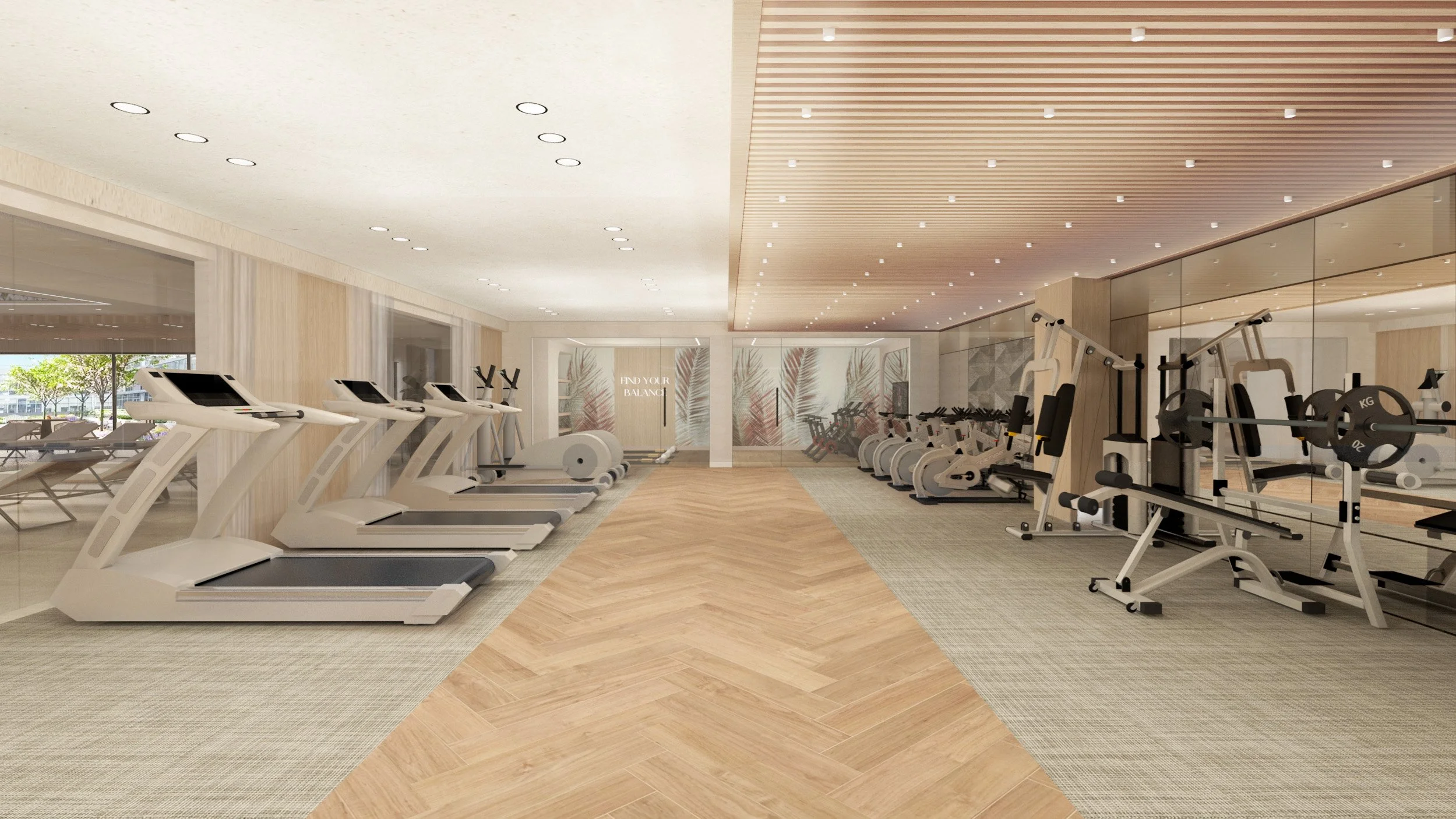The Amenity That Consistently Matters: Why Residents Choose the Fitness Center
When planning a new development, the amenity conversation inevitably comes to the table: How much space should be allocated? Which amenities truly matter? What will help the property stand out in a crowded market?
While trends come and go, one preference remains remarkably consistent. According to Greystar’s 2024 “By Design” survey of more than 90,000 residents, the fitness center ranks as the second most requested amenity, following only parking.
Why does it matter so much?
Residents value fitness centers for the convenience and the access to a space dedicated to physical and mental well-being. They provide a place to exercise, destress, and improve health. Equally important, it provides an opportunity to build community through social interaction with neighbors. For many residents, regardless of age, this is a big draw.
Beyond the obvious health benefits and community opportunities, the on-site fitness center also provides a significant, tangible value proposition. For residents, having an in-house gym is about reclaiming time and saving money. A quality on-site facility allows them to eliminate monthly membership fees which can easily run $50 to $100 per person and avoid the time commitment of commuting to an external gym.
For others, the draw is completely aspirational. Residents picture themselves starting a routine, even if they know they may never follow through. The idea of having a gym downstairs feels hopeful, like a small promise they are making to themselves. Even if the equipment never actually becomes part of their day, the option feels good to have, and that feeling alone can influence how they perceive the building.
In today's competitive rental market, these factors translate directly into the perceived value and overall quality of life offered by the property, reinforcing the amenity's role as a powerful tool for resident satisfaction and long-term retention.
Key considerations when designing a fitness center to knock it out of the park
1. Zone Planning
Create clear distinctions between cardio, strength training, functional fitness, and stretching or group-class areas. This improves flow, reduces congestion, and allows residents to use the space comfortably. When square footage is limited, prioritize the needs and preferences of your target demographic.
2. Equipment
Residents expect modern, well-maintained equipment. Quality matters and the right mix can make even a modest space feel elevated.
3. Mood and Atmosphere
Decide whether the space should feel calming and luxurious or energetic and motivational. Most residential fitness centers aim for a balanced tone, with lighting, color, and finishes supporting both comfort and vitality.
4. Flooring
Use appropriate flooring for each zone. Rubber is recommended in weight areas for impact absorption, cushioned surfaces for stretching, and durable finishes elsewhere to support long-term wear.
5. Technology Integration Modern fitness is digital. Ensure strong, dedicated Wi-Fi coverage across the entire space. Include features like integrated USB charging ports, smart TV displays for streaming on-demand workouts (e.g., Peloton, YouTube classes), and easy-to-use digital sign-in or reservation systems. Technology shouldn't just be a convenience; it should elevate the workout experience.
6. Programming & Engagement A beautiful room is only half the battle; activation is essential. Plan for ongoing usage by hosting weekly community events like group runs, yoga sessions led by local instructors, or friendly fitness challenges. This reinforces the "community-building" promise and provides recurring engagement points that keep the amenity top-of-mind for residents
Gym at Tryon North
While some luxury amenities, such as theater rooms, can be purely for marketing purposes, fitness centers are both practical and consistently used. Developers will continue to prioritize fitness centers in their projects because they help attract the right residents and keep the property competitive well beyond lease-up.




